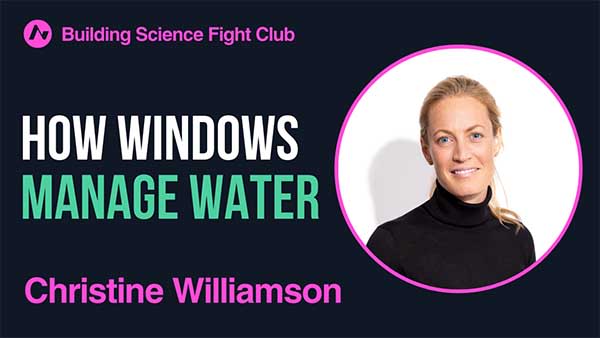- Home /
- Construction Details /
- Wood Frame with 2" Rigid Exterior Insulation & Wall Panels /
- Flanged Window Detail with 2" Exterior Insulation & Panels /
Wood Frame with 2" Rigid Exterior Insulation & Wall Panels
Flanged Window Detail with 2" Exterior Insulation & Panels
R-25 Wall
Head
(Detail 1/3)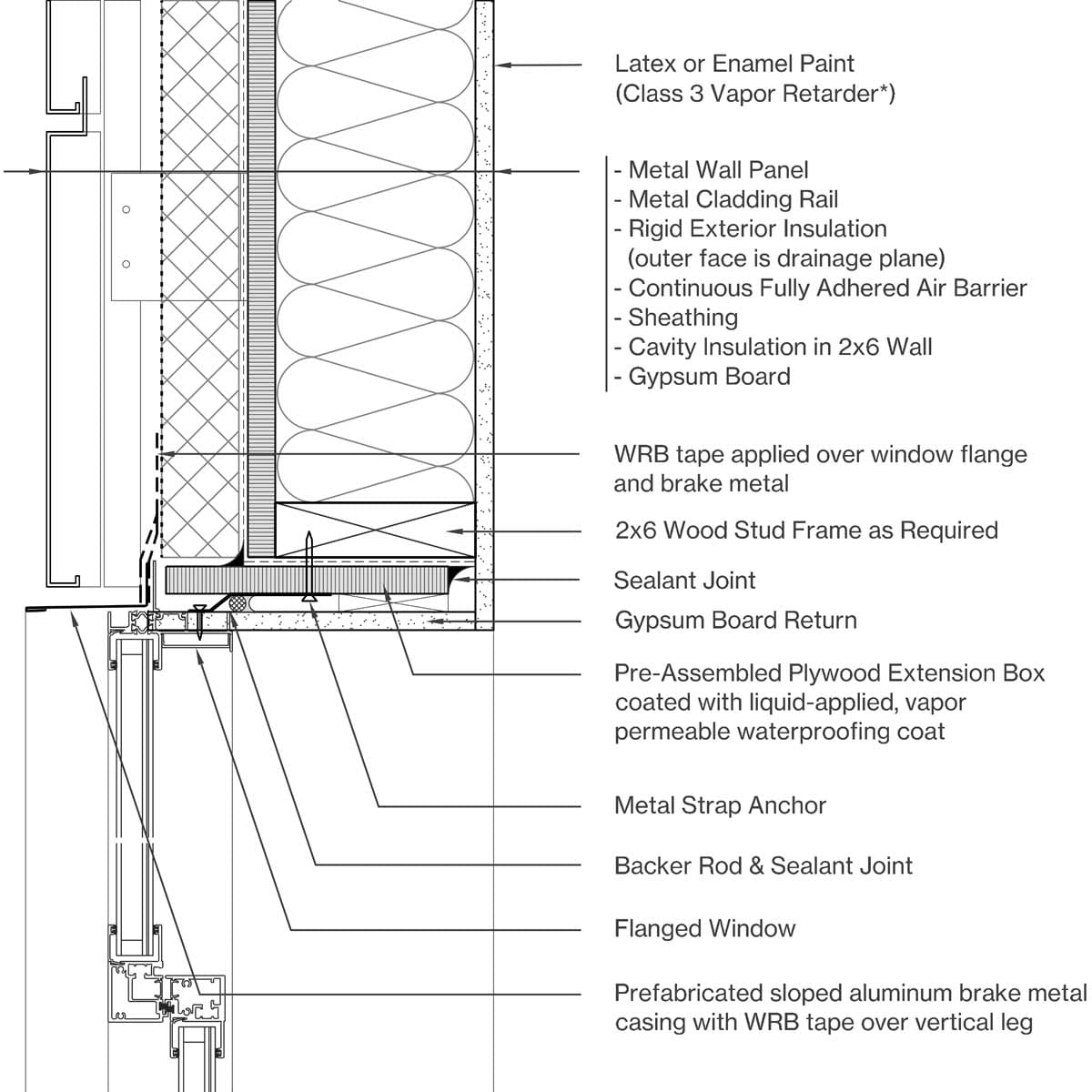
Sill
(Detail 2/3)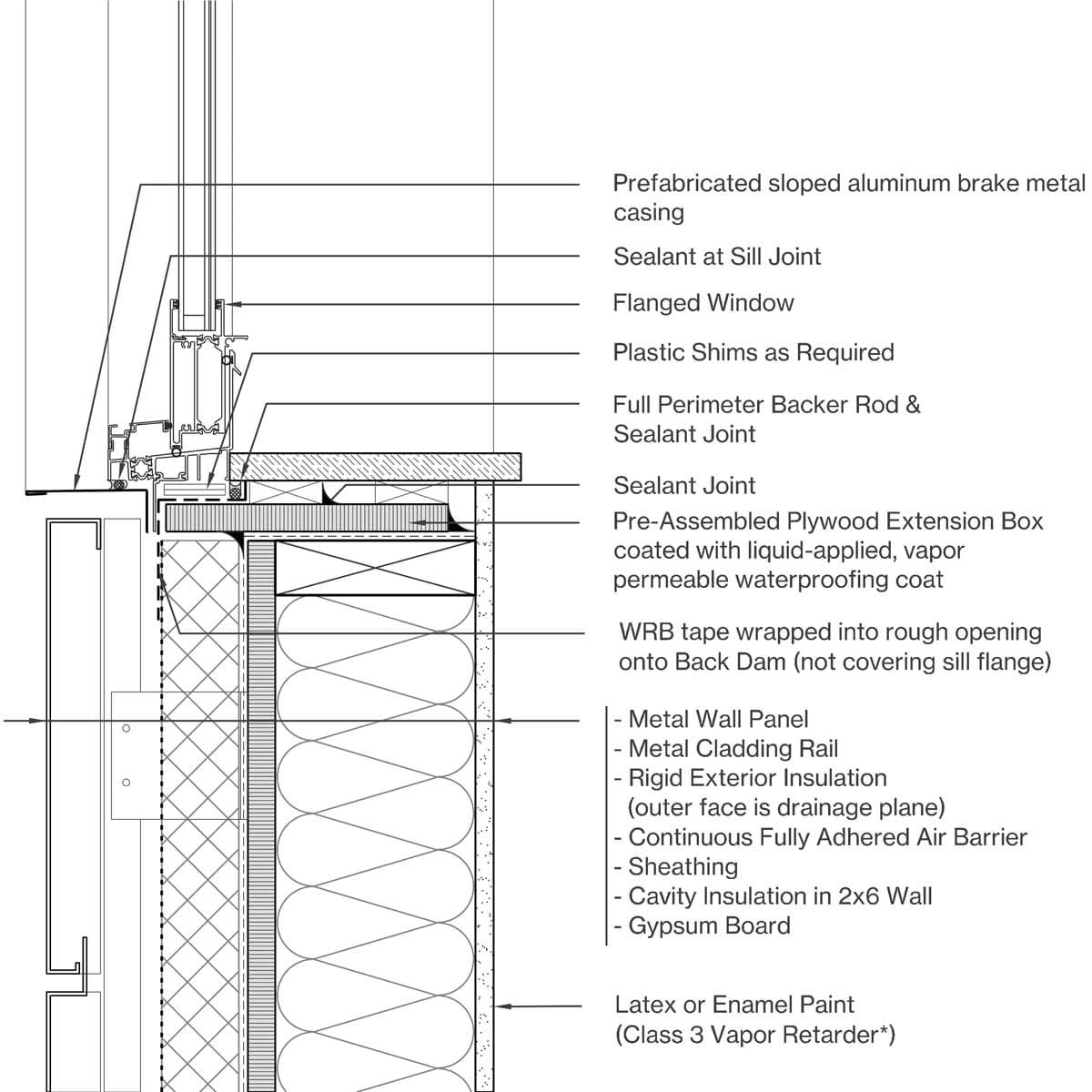
Jamb
(Detail 3/3)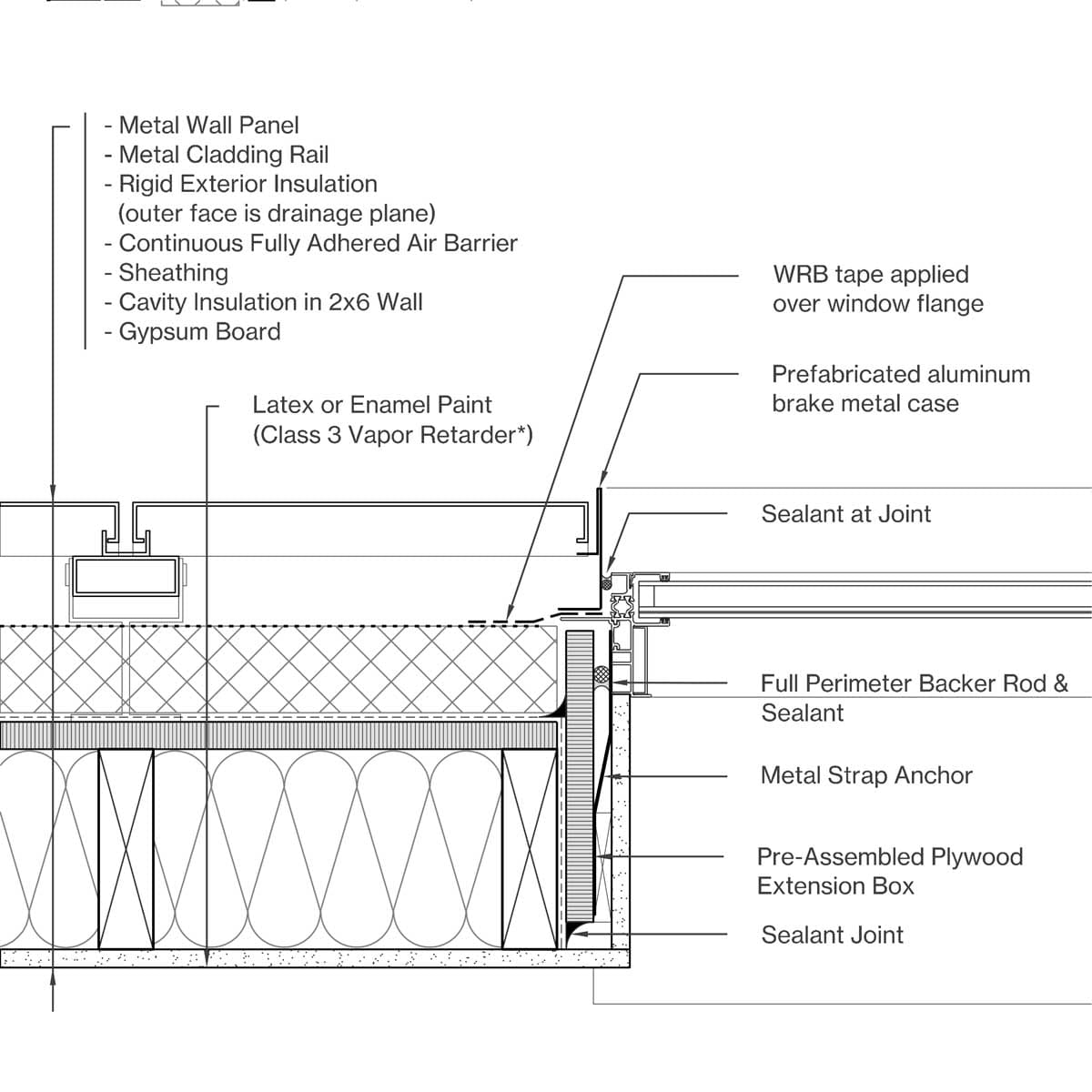
Notes
This window detail uses a two stage seal to insure no water or air can infiltrate into the building. The exterior seal is installed by applying WRB tape over the window head flange. No tape should be applied over the window sill flange to allow the window to drain. The interior seal is added by installing a full perimeter backer rod & sealant joint. Expanding foam or special tapes can be used instead of sealant, however a backer rod should still be installed to prevent the foam from completely filling up the cavity and preventing the system to drain. Plastic shims should be used to level out the window in the rough opening. These shims elevate the window slightly, which creates a space for water the drain.
To create a continuous air barrier, the pre-assembled plywood extension box needs to be sealed to the wall's fully adhered air barrier and the window with sealant joints.
* Whether or not you need a Class II or III Vapor Barrier depends on your climate zone, location and amount of exterior insulation. Refer to Wall Barriers Notes section below for more info.
Building Science Courses on Acelab
Adapt this detail & find the right products
Learn how you can adapt this detail based on your climate zone & desired aesthetic
Wall Barriers
Understand how climate affects wall specifications, learn whether you should use a vapor retarder, & discover suitable products.
Climate Zone
Option 1/3
Wall Design with Unfaced EPS
Design Requirements
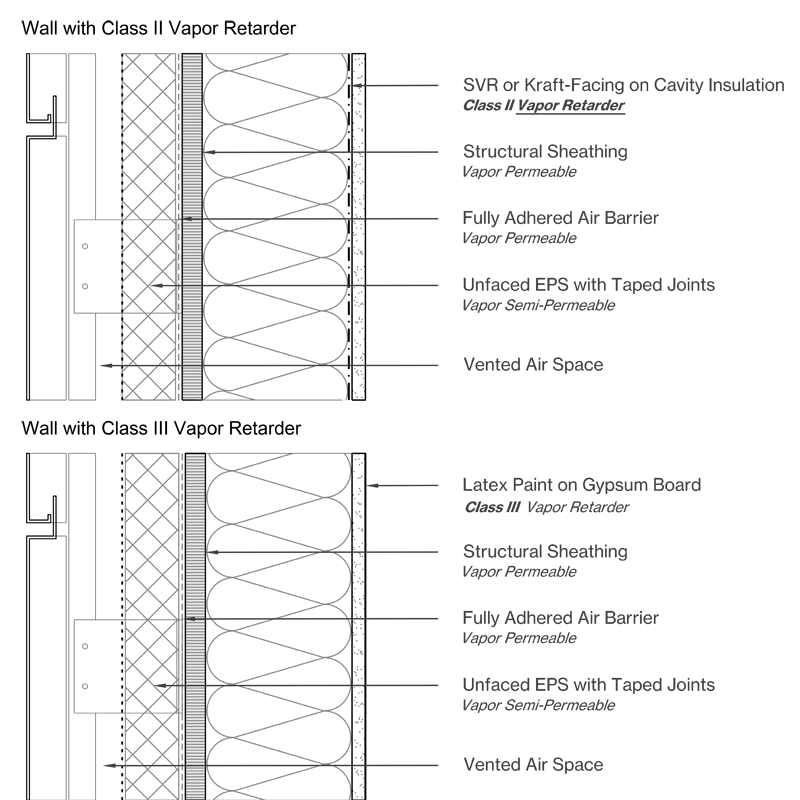
Should you use a vapor retarder?
Enter your state and county above to see whether you should use a vapor retarder
Recommendation & calculations are based on the methods described in the Builder’s Guides from the Building Science Corporation and are only valid for residential occupancies.
Notes
This wall is designed with vapor permeable rigid insulation, like unfaced EPS. Whether a Class II or Class III Vapor Retarder should be installed depends on the project's climate zone. In Zone 5, a Class III Vapor Retarder, like Latex Paint, can be used if a vented airspace is provided between the sheathing & cladding. In Zone 6 or 7, a Class II Vapor Retarder needs to be installed. Class II Vapor Retarders can be either a separate membrane, like a 'Smart Vapor Retarder' (SVR), or kraft facing on the cavity insulation.
Product Options
Browse curated materials for this construction detail.
EPS
Rigid foam panels that are water repellent, budget-friendly and have an average thermal performance.
Smart Vapor Retarder (SVR)
Class II vapor retarders with variable permeance that block vapor in low, but not in high humidity conditions.
Fully Adhered Air Barrier
Membranes that are designed to be airtight, but allow water vapor to pass through.
Fiberglass Batts (Kraft Faced)
Batts made from plastic reinforced glass fibers with a Class II vapor retarding facing.
Fiberglass Batts
Batts made from plastic reinforced glass fibers that are budget-friendly and easy to install.
Mineral Wool Batts
Fiberous batts that are vapor permeable, non-combustible and offer good energy performance.
Loose-Fill Fiberglass
Fiberglass particals that are blown in place that are budget-friendly and offer entry-level energy performance.
Cellulose Spray
Cellulose particlas that are blown in place that offer superior energy performance at a premium price point.
Spray Polyurethane Foam (Closed Cell)
Spray applied expanding foam that is water repellent, airtight and offers superior energy performance.
Spray Polyurethane Foam (Open Cell)
Spray aplied expanding foam that is budget-friendly and offers good acoustical and energy performance.
Cladding
Explore different types of cladding that can be used for this construction detail and find suitable products.
Profiled Panels
Thin Panels
Heavy Panels
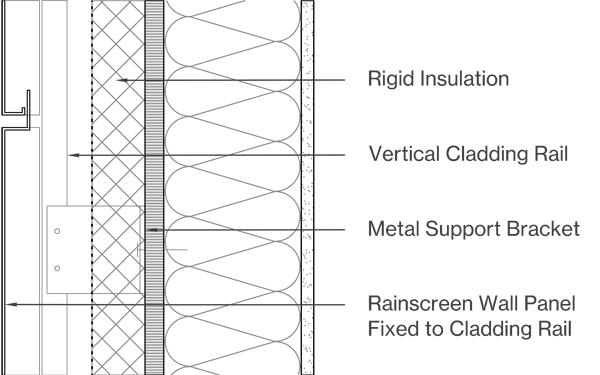
Notes
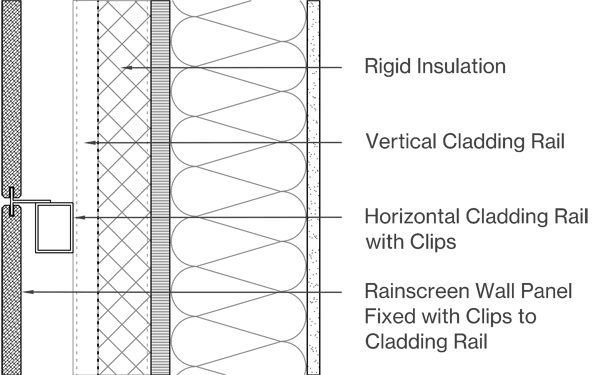
Notes
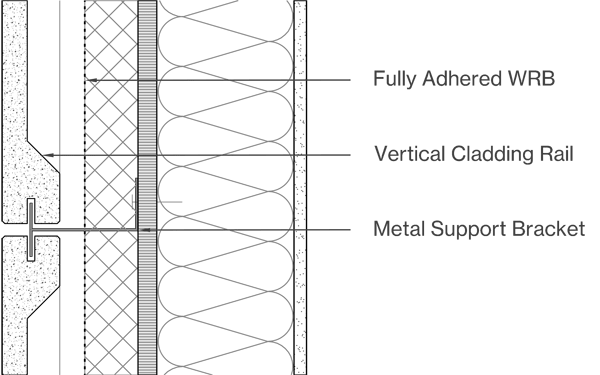
Notes
Architectural Metal Panel
Sturdy metal panels that come in many shapes and forms with various finishes.
Aluminum Composite Material (ACM)
Lightweight metal sandwhich panels with a polyethylene core that provide excellent durability.
Perforated Metal Panels
Thin metal panels with perforations that provide various degrees of transparency.
Corrugated Metal Sheet
Profiled thin metal panels that are budget-friendly and easy to install.
Terracotta Panels
Panels made of baked clay that offer great durability and recyclability.
Fibercement Panels
Composite panels made of cement, sand and cellulose fibers that offer excellent durability.
Insulated Metal Panel
Metal sandwhich panels with a thick foam core that offer durability and thermal protection.
Precast Concrete
Factory cast concrete panels that can be custom made and have various texture and finish options.
Windows
Find different types of windows suitable for this detail.
Budget-Friendly
Affordable windows without a thermal brake that have entry-range energy performance.
Mid-Range
Common windows with a simple thermal brake that provide solid energy performance.
High-Performance
Frames with multi-chambered thermal brakes that deliver a superior energy performance.
Luxury
Specialty windows with thin frames that have an exquisite performance and aesthetics.
